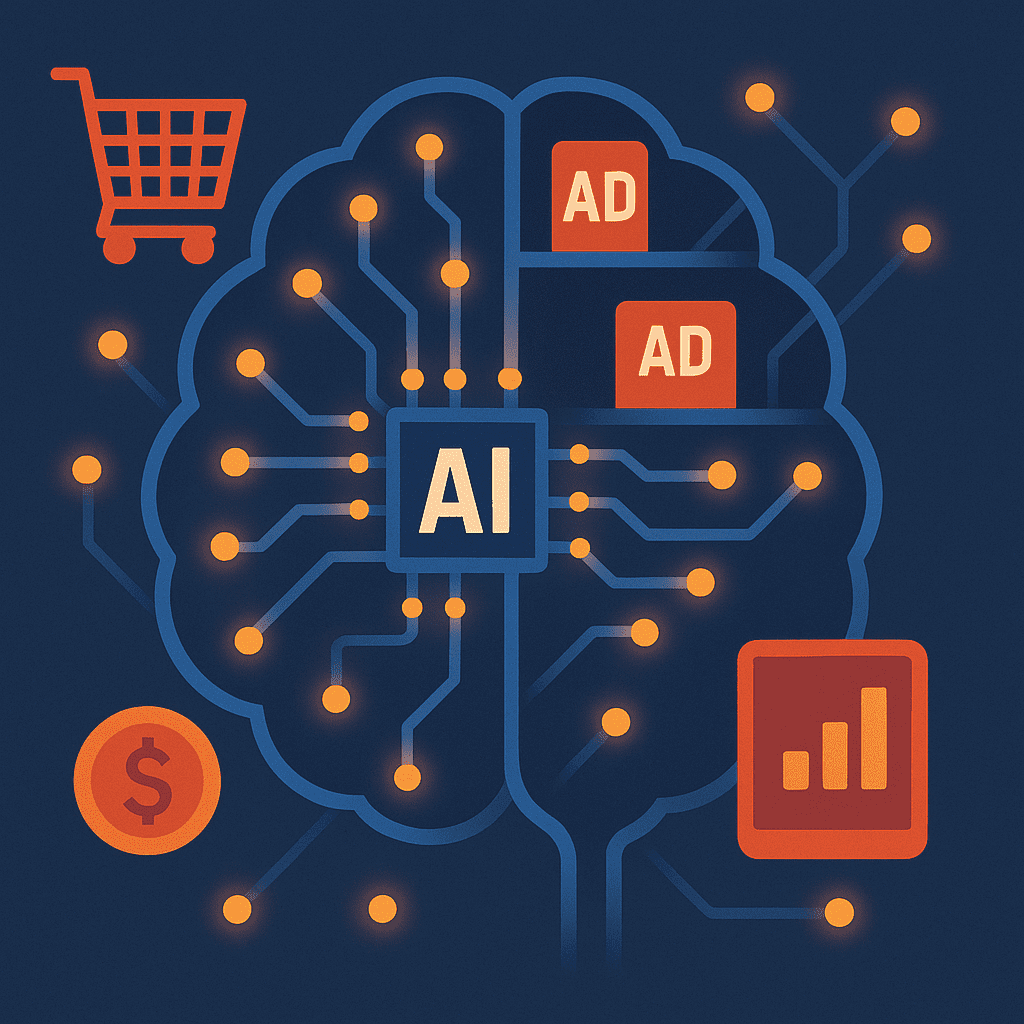How Artificial Intelligence Is Driving Efficiency
and Precision Across Retail Media Networks
Artificial Intelligence (AI) has emerged as a defining force in retail media. Once seen as an aspirational buzzword, AI is now embedded in the everyday fabric of ad sales operations, targeting logic, content personalization, and performance optimization. But if there’s one thing we’ve learned working with leading retailers and media companies, it’s this: adopting AI isn’t about flipping a switch—it’s about making dozens of smart, interdependent decisions across data, people, and process.
Retailers who get it right are seeing meaningful gains—shorter sales cycles, more relevant campaigns, and real-time optimization at scale. But many are still early in their journey, wondering where to begin, how to structure their stack, and what outcomes they should even expect from AI. This post aims to clarify those questions and offer a strategic, grounded view of what it takes to truly transform retail media through artificial intelligence.
The New Operating System of Retail Media
AI’s influence in retail media is expanding far beyond automation. In many ways, it’s redefining the operating model of modern media networks. AI enables sales reps to prioritize accounts based on predicted value, it helps marketers auto-generate ad creative for different audiences, and it provides media planners with bid suggestions and pacing alerts in real time.
Behind the scenes, predictive models inform segmentation, dynamic pricing, and inventory planning. Generative AI creates product descriptions and promotional content tailored to shopper personas. Machine learning engines surface anomalies in campaign performance or forecast regional demand based on external factors like weather or store traffic. These are not futuristic features—they’re being piloted and deployed across leading networks today.
Platforms like Kevel, AdButler, and The Trade Desk have integrated machine learning for smarter campaign execution. Salesforce’s Einstein GPT and Tableau Pulse are helping internal teams derive insights faster. And solutions like LiveRamp and Snowflake Cortex AI are powering sophisticated segmentation and performance analytics across client portfolios.
But while tools are evolving quickly, one truth remains: tools are only as good as the data and decisions that support them.
Data: The Prerequisite for Intelligence
The most common challenge we encounter when working with retail media leaders isn’t whether they have access to AI tools—it’s whether they’re ready to use them effectively. That readiness begins with data.
Without a clear, consistent, and unified data architecture, AI investments stall. We’ve worked with organizations where product IDs vary by channel, customer records are duplicated across systems, and CRM, OMS, loyalty, and media data live in disconnected silos. In these environments, predictive models struggle. Attribution is muddy. Personalization falls flat.
To truly unlock AI, retailers must first build a modern data foundation. That means integrating and reconciling customer data, standardizing product hierarchies, applying governance frameworks, and ensuring real-time accessibility across business units. It’s the quiet, behind-the-scenes work that enables flashy AI features to function—and it’s the work most organizations underestimate.
Salesforce’s Role in an AI-Driven Stack
Salesforce has made significant strides in embedding AI across its platform. For retail media use cases, we often see clients using:
- Data Cloud to connect shopper identities and behavioral data across channels
- Sales Cloud with Einstein GPT to streamline advertiser outreach and proposal development
- Tableau and Tableau Pulse to visualize performance and surface real-time signals for optimization
These tools are particularly powerful when paired with external systems. For example, combining Salesforce with Snowflake allows for richer modeling and better performance queries. When used with Kevel or CitrusAd, Salesforce can help manage advertiser relationships and campaign calendars while external platforms handle execution.
The best architectures are composable—Salesforce doesn’t replace every ad tech or analytics tool, but it becomes a trusted source of truth for identity, workflow, and insight. That flexibility is critical in a post-cookie, highly fragmented ecosystem.
Strategy, Not Just Software
Even with the right tech stack, AI alone doesn’t drive outcomes. Human strategy is what turns tools into transformation.
Retailers must determine what moments in the customer journey truly warrant personalization. Not every page needs to be dynamic; not every promotion should be predicted. Sales teams must be trained to act on AI recommendations, while marketers need playbooks for interpreting AI-generated insights without overreacting to noise.
At V2, we believe this is where the difference between good and great shows up. Our clients lean on us not just to install solutions, but to define the operating model around them. We help teams:
- Identify the use cases that will drive the most value
- Map cross-functional workflows that support intelligent execution
- Develop measurement frameworks that track lift, efficiency, and ROI
AI can accelerate success—but it can also magnify chaos. Without the right planning, teams can become overwhelmed by dashboards, alerts, and half-baked personalization experiments. That’s why thoughtful governance and a phased roadmap matter just as much as the tools themselves.
Building Trust Starts With A Conversation.
Let’s Unlock Intelligent Growth
Retail media leaders don’t just need AI—they need a plan. At V2 Strategic Advisors, we work side-by-side with clients to ensure their AI strategies are data-ready, operationally sound, and built to last.
If you’re ready to explore how artificial intelligence can reshape your retail media business—from campaign automation to predictive insights—we’re ready to help.
Let’s talk about how to turn your AI ambition into real, measurable performance.

